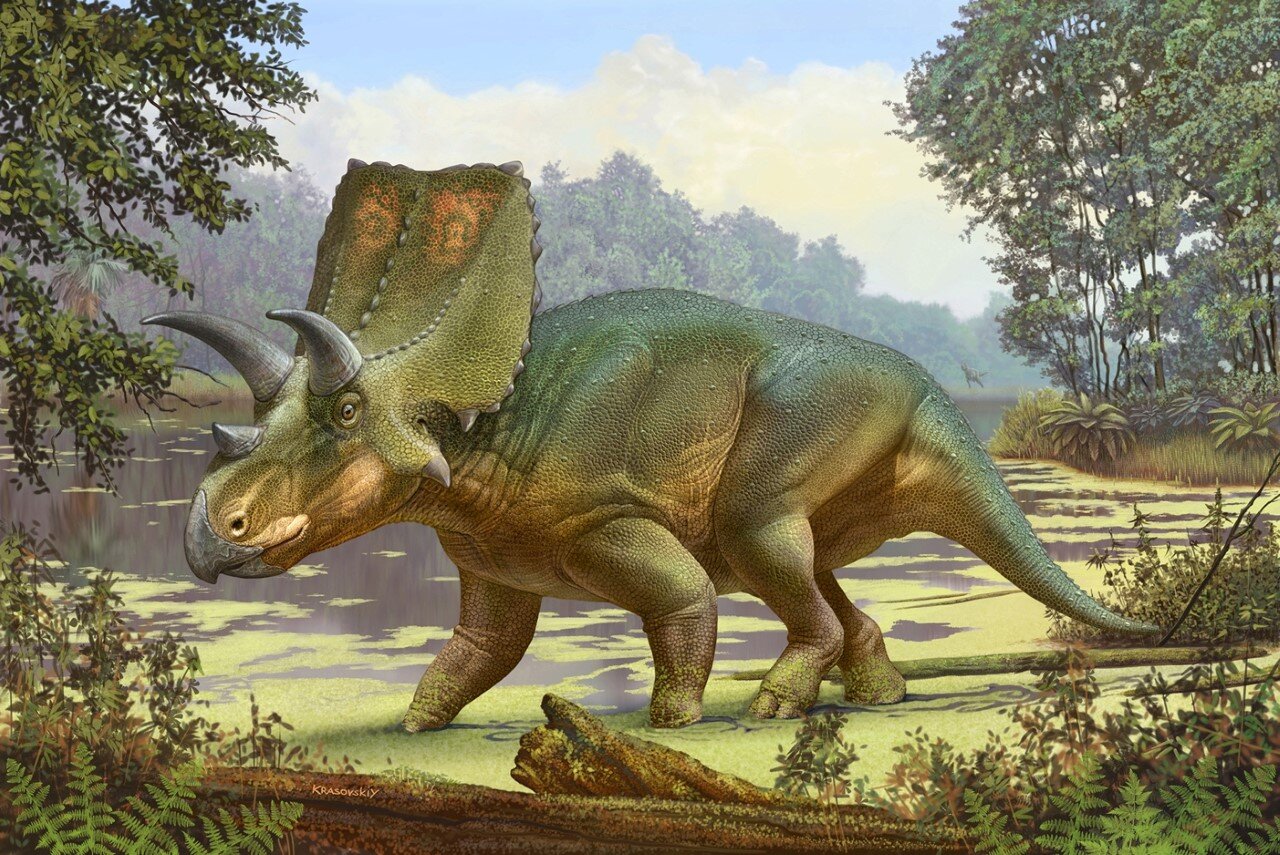 |
| Sierraceratops turneri. Credit: University of Bath |
A fossil found over twenty years ago on the ranch of CNN founder Ted Turner has been discovered to be a new species of horned dinosaur (ceratopsid) not previously found in North America. The new dinosaur, Sierraceratops turneri, lived in New Mexico about 72 million years ago. Its discovery hints that many dinosaurs still remain to be discovered in North America.
Sierraceratops, refers to Sierra County, New Mexico, where the fossil was discovered, and to the group of which the species is a part, Ceratopsidae. The species name turneri honors Ted Turner, founder of the Cable News Network (CNN), who owns the ranch where the fossil was discovered and permitted its collection by paleontologists and volunteers.
The research team, led by the New Mexico Museum of Natural History & Science (NMMNHS) and including Dr. Nick Longrich at the University of Bath, published their findings in the journal Cretaceous Research. The fossils of the new species, which included parts of the skull and skeleton from one individual, were found in Late Cretaceous rocks of the Hall Lake Formation near Truth or Consequences, New Mexico.
A partial skeleton was dug up in the late 1990s and was originally identified as belonging to Torosaurus. Over twenty years later, NMMNHS paleontology student Sebastian Dalman re-examined the skeleton, along with colleagues Spencer Lucas, Steve Jasinski, and Nick Longrich. It turned out to be a new species, unrelated to dinosaurs previously discovered from the northern part of the continent.
Key features that distinguish Sierraceratops from other horned dinosaurs are its short but massive brow horns, and the anatomy of the dinosaur's frill bones. Sierraceratops had a large skull, about 5 feet long, and its overall length was about 15 feet. Like other ceratopsids, it was a quadrupedal plant-eater.
Sierraceratops is related to but predates its relative Triceratops by some 6 million years. Horned dinosaurs were large, rhino-like herbivores that likely lived in groups or herds. They were major members of Late Cretaceous ecosystems in North America and were preyed on by tyrannosaurs.
Comparing features of Sierraceratops with other known ceratopsid dinosaurs helped the research team trace its evolutionary relationships to other horned dinosaurs. The discovery is part of a wave of new dinosaur discoveries that have emerged from North America in recent years. As paleontologists collect new skeletons and restudy old fossils, they have found that the same species did not live everywhere. Instead, different horned dinosaurs, duckbills, tyrannosaurs, and raptors lived in different parts of the continent.
As paleontologists have moved from well-known hunting grounds into more poorly known territories, new species have emerged. These finds suggest that dinosaur diversity was higher than previously thought and that many species are yet to be found.
The research team concluded that Sierraceratops is most closely related to other ceratopsids from Texas and northern Mexico. These dinosaurs form a group that lived only in southwestern North America, different from the ceratopsid groups that lived to the north. This suggests that distinct and endemic dinosaurs may have inhabited different parts of western North America during the Late Cretaceous, 72 million years ago.
Dr. Nick Longrich, from the Milner Centre for Evolution at the University of Bath said, part of the reason dinosaurs became so diverse is that they would specialize in different habitats, just like modern birds or mammals. These are huge animals, and you'd think they would be widespread. But in fact, it's not the same species living everywhere. Different species probably adapted to the local climate, plants, predators, and diseases giving them an edge against invaders from outside.
When Sierraceratops lived and died, America's environment was very different. Today, the American Southwest is deserts and dry plains. In the Late Cretaceous, climates were balmy, forests were lush, and sea levels were 100 meters higher. New Mexico wasn't covered by desert, but by rivers, swamps, and floodplains, full of palm trees and alligators, on the edge of a huge inland sea. This coastal plain extended all the way to Canada and supported a very diverse dinosaur fauna.



0 Comments